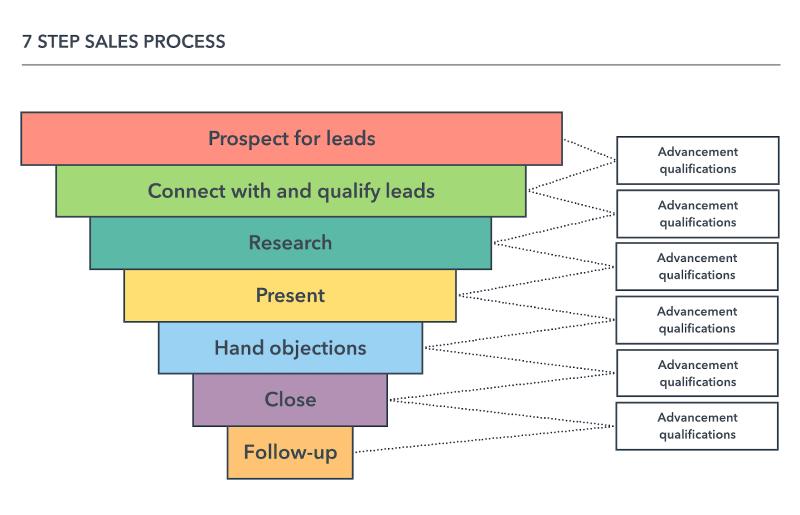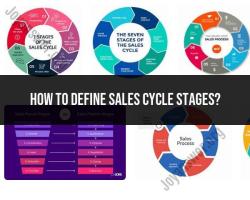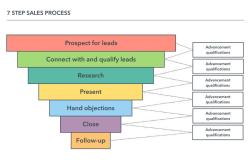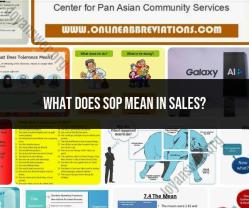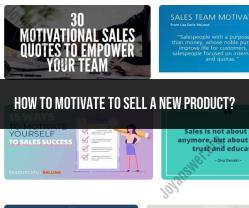What are the stages of the sales cycle?
The sales cycle typically consists of several key stages, each representing a different phase of the process from initial contact with a potential customer to closing the sale and beyond. While specific terminology and the number of stages may vary depending on the industry and sales approach, here are the common stages of the sales cycle:
Prospecting: This stage involves identifying potential customers or leads who may have a need for the product or service being offered. Prospecting methods may include cold calling, networking, referrals, email marketing, and social media outreach.
Qualification: In this stage, sales professionals qualify leads to determine their level of interest, budget, decision-making authority, and fit with the product or service. Qualification helps prioritize leads and focus efforts on those most likely to convert into customers.
Needs Assessment: During this stage, sales professionals engage with qualified leads to understand their specific needs, challenges, goals, and preferences. This involves asking probing questions, actively listening, and gathering information to tailor the sales approach and solution to meet the customer's requirements.
Presentation and Demonstration: In this stage, sales professionals present their product or service to the prospect, highlighting its features, benefits, and value proposition. Demonstrations, product samples, or visual aids may be used to showcase the offering and address the prospect's needs and concerns.
Handling Objections: Prospects may raise objections or concerns during the sales process, such as price, competition, or timing. Sales professionals address these objections by providing relevant information, offering solutions, and overcoming objections through persuasive communication and negotiation.
Closing: The closing stage involves securing the commitment from the prospect to move forward with the purchase. This may involve asking for the sale directly, negotiating terms, or guiding the prospect through the decision-making process. Effective closing techniques help finalize the deal and convert the prospect into a customer.
Follow-Up and Relationship Building: After the sale is closed, the relationship with the customer continues through follow-up and ongoing communication. This stage involves providing post-sales support, addressing any issues or concerns, and nurturing the customer relationship to foster loyalty, repeat business, and referrals.
Retention and Upselling: Once a customer is acquired, efforts shift towards retaining them and maximizing their lifetime value. This may involve upselling or cross-selling additional products or services, providing ongoing value and support, and maintaining positive relationships to encourage repeat purchases and customer loyalty.
By understanding and effectively navigating each stage of the sales cycle, sales professionals can optimize their efforts, build stronger relationships with customers, and drive sustainable business growth.
What are the distinct phases or stages typically found within a sales cycle?
While the specific stages and their order might vary slightly depending on the industry, product, and sales methodology, the following phases generally represent the distinct stages of a sales cycle:
1. Prospecting:
- Identify potential customers: This involves researching and identifying individuals or businesses who might be interested in your product or service. This can involve utilizing various methods like market research, referrals, and online lead generation tools.
- Qualify leads: Not all potential customers are equally suitable. Evaluating leads based on their needs, budget, and decision-making authority helps prioritize your efforts and focus on those with the highest potential for conversion.
2. Pre-Approach and Preparation:
- Research the prospect: Once a qualified lead is identified, gather information about their specific needs, challenges, and buying habits. This helps tailor your approach and presentation to resonate effectively.
- Plan your presentation: Develop a compelling sales pitch that highlights your product or service's value proposition and how it addresses the prospect's specific needs and challenges. Practice your presentation to ensure clear and confident delivery.
3. Approach and Presentation:
- Make contact: Establish initial contact with the prospect through your chosen method, such as a phone call, email, or in-person meeting.
- Build rapport: Begin by building a positive relationship with the prospect. This involves actively listening to their needs, concerns, and priorities, demonstrating genuine interest and establishing trust.
- Present your solution: Clearly articulate how your product or service addresses the prospect's specific needs and challenges. Highlight its key features and benefits, focusing on how it can provide value and contribute to their success.
4. Handling Objections:
- Address concerns: Prospects often have questions or concerns about your product or service. Be prepared to address these objections clearly and confidently, providing solutions or clarifications that address their specific points.
5. Negotiating and Closing:
- Negotiate terms: If applicable, discuss pricing, contracts, and other terms of the sale. Be prepared to present competitive offers and negotiate win-win solutions that benefit both parties.
- Close the sale: Guide the prospect towards a decision by summarizing the key benefits and offering a clear call to action, encouraging them to purchase your product or service.
6. Follow-Up:
- Maintain communication: Even after a sale is closed, it's crucial to maintain communication with the customer. This can involve providing ongoing support, addressing any questions or concerns, and potentially exploring opportunities for upselling or cross-selling related products or services.
Remember: The sales cycle is an iterative process. You might need to revisit and refine certain steps throughout your interactions with a prospect, adapting your approach based on their specific needs and feedback.
